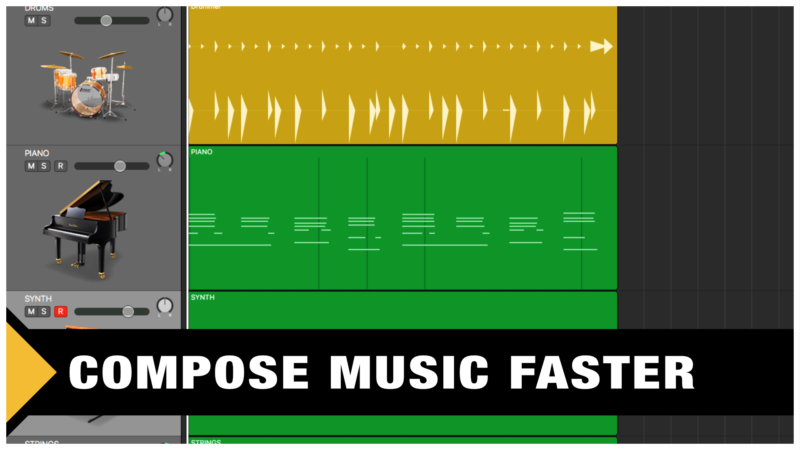 Hello Composers! =)
Hello Composers! =)
Mike here, and I want to share one of my tricks to speed up my music composition workflow. I call it: The Story Method, and it is basically similar to sketching the storyline for a book or a movie.
Here’s how it works:
1. STORY GROUP
Create a group (Folder/Group of instruments) in your DAW, and call it “story”.
2. CORE ELEMENTS OF MUSIC
Add the fundamental elements of music as tracks in your story group. I think of the core elements of music, as similar to the three main colors: red, green and blue. The primary colors that you can create any image from.
For music this is: rhythm, harmony and melody. So start by creating three empty MIDI tracks And name them: rhythm , harmony and melody.
3. CHOOSE YOUR STORY COLORS
Now it is time for you to choose what type of sounds you will use to paint the main storyline of your music. And add a track with a proper name for each.
Just make sure you have at least one track per fundamental color of music. That means at least 3 tracks, but you can use a few more if you want. Here is what I usually add in my story group:
- Drums: The main rhythm
- Bass: The harmonic anchor
- Drive: The driving rhythm
- Harmony: The chord progressions
- Theme: Main theme + root
- Melody: The leading melody
4. ADD THE INSTRUMENTS
Now it is time to add the actual instruments and sounds to each track in your story group. This will vary for each new project, but here is an example I have used.
- Drums: Acoustic Drum Kit
- Bass: Electric Bass
- Drive: Staccato Strings
- Harmony: Piano & Strings
- Theme: Omnisphere
- Melody: Vocal Audio Track
5. WRITE YOUR MAIN STORY
Finally it is time for the main point of all this. To use your newly created story group, and compose the main storyline using only those tracks.
Basically a mockup or sketch version of your final composition. You can use this story group in many ways. Either write your complete composition in this story group first.
Or, as I personally do, switch back and forth between working in your story group and your full composition. So basically, you can write a section in your story, then arrange and write that piece of the story with tracks in your full project.
Awesome! Now you have learned one of my favorite tricks to boost my composition workflow, and avoid spending too much time searching for the best instruments, sounds, presets and so on.
Instead, you will have much better focus on the most important thing in music. The actual storyline, meaning the rhythms, the chords, the harmonies, melodies, riffs and motifs.
